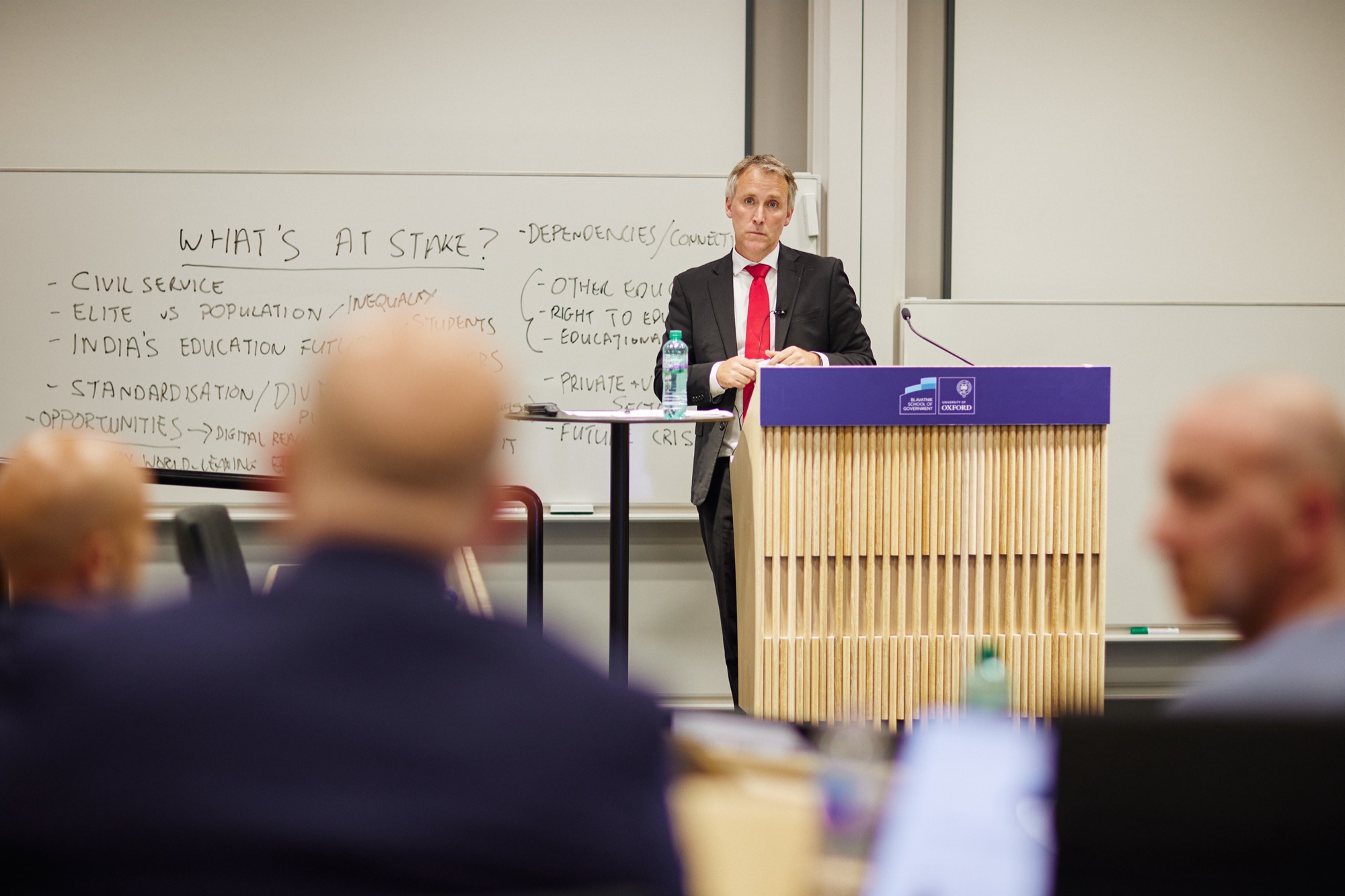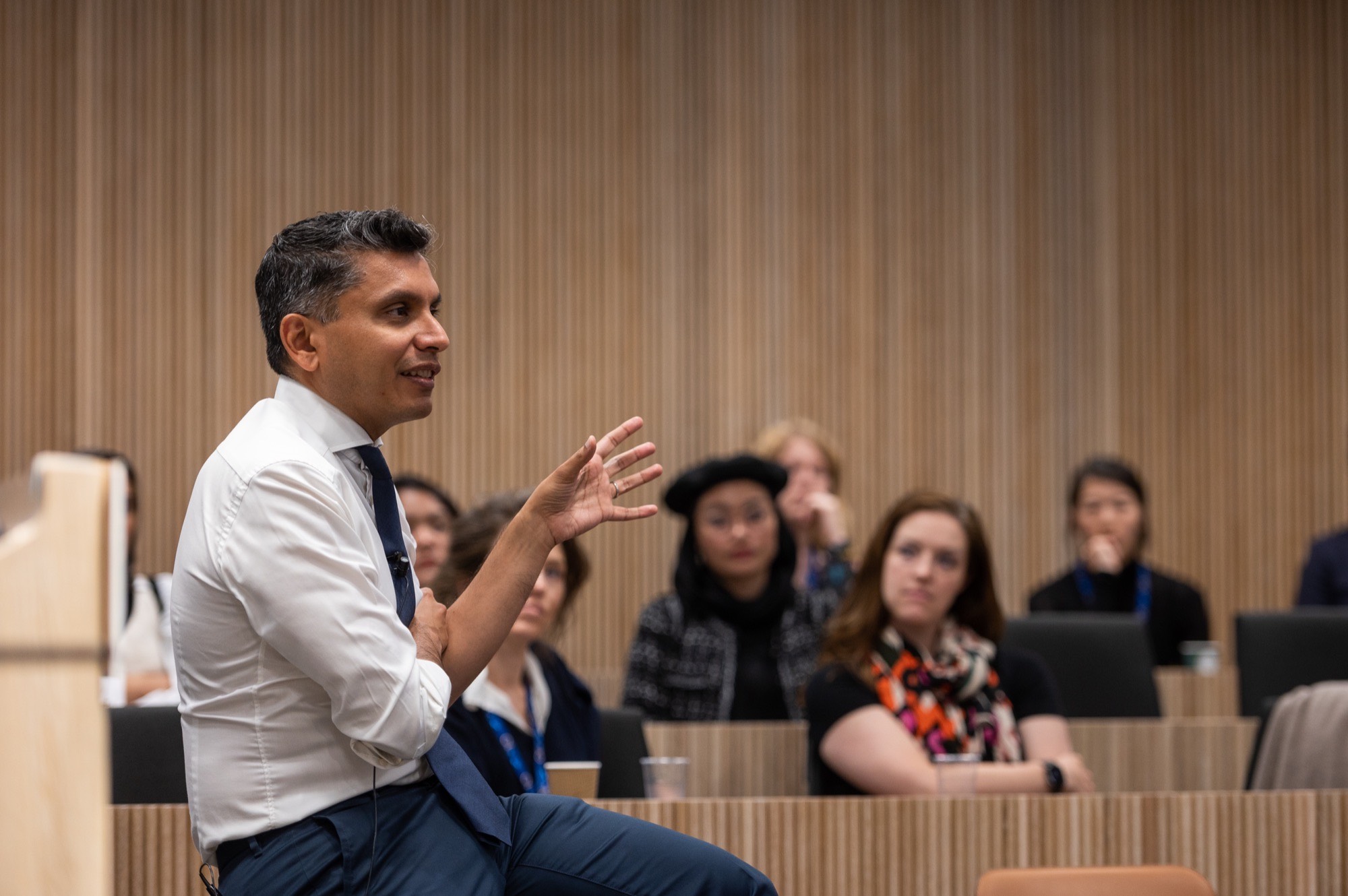Our resources thrust participants into the heart of real-world scenarios, from crisis management in the UK during the Covid-19 pandemic to cross-party education reform in Brazil.
Many of our resources are available on The Case Centre distribution platform. Educators who are registered with the site can access free review copies of our case studies, teaching notes, and other materials.
To inquire about our other cases or background materials, please contact us at casecentre@bsg.ox.ac.uk.
Driving change: regulation, reform and Uber’s future in London
In September 2019, the regulator Transport for London (TfL) was deliberating over the renewal of Uber’s operating licence. Since 2017, Uber had been in a precarious position in London, one of its largest markets, after TfL first decided not to renew its licence due to public safety concerns. Uber appealed and received a probationary licence, and now was awaiting a more permanent verdict. The licensing decision was just one flashpoint in an ongoing debate as numerous interest groups actively lobbied politicians and regulators over Uber’s position in London’s longstanding car-hire regulatory regime. The drivers of London’s iconic black cabs argued that TfL let Uber operate between the lines of the otherwise strictly regulated car-hire industry, giving Uber a competitive edge. But Uber – buoyed by its hundreds of thousands of loyal customers – asserted that the app enhanced competition, expanded customer choice and created jobs.
On 24 September 2019, TfL announced that it would give Uber a two-month extension as it reviewed additional information. TfL’s Commissioner Mike Brown now had two months to decide if TfL should grant Uber a licence. Meanwhile, Mayor of London Sadiq Khan – up for re-election in May 2020 – had to determine how to navigate the contentious debate.
- Understand interest group politics by exploring the role of non-governmental interests in policymaking;
- Investigate the role of law in the regulation of the gig economy and the role of the courts in policymaking;
- Consider how businesses may respond to changes in the legal environment.
How to write case studies for public policy education
What makes an effective public policy case? Cases can be designed to suit public policy education by focusing on protagonists faced with complex, ambiguous challenges while acting in the public interest. These protagonists are often situated within diffuse power structures, are accountable to a wide array of stakeholders, and must make trade-offs between competing values. This guide provides an introduction to writing public policy cases including concrete advice for choosing and researching compelling settings and protagonists.
This document is designed to help faculty develop case studies for schools of government and public policy. While cases are most commonly used in business education, they can be designed to suit the unique needs of public policy education. What makes public policy cases particularly distinctive is their focus on protagonists (ideally) acting in the public interest. Not only do these case protagonists tend to face broader, more ambiguous aims than their business counterparts, but they also function within more diffuse power structures and are accountable to a wider array of stakeholders. These distinguishing features inform how public policy cases are both written and taught.
This document provides an overview of what public policy cases are, delineating them from more-familiar business school ones, and offers specific guidance on how to write public policy cases to help educate future government leaders.
Building better judgement amongst policymakers using the case-study method
How can educators prepare students for the unique challenges of public service? When information is limited, outcomes are uncertain, and time is of the essence, public leaders need to access judgement skills to resolve difficult situations. This guide explores how the case method teaches current and future public leaders to make better decisions by: immersing them in complex, real-life scenarios; exposing them to diverse competencies, characters, and commitments; and giving them the space to reflect on choices.
This document provides an introduction to the case method in policy school settings. Public leaders frequently face difficult decisions where outcomes are uncertain and time is of the essence. Under such conditions, decision-makers often rely on instinct rather than careful scientific or ethical reasoning. However, as this document explores, it is possible to educate future decision-makers with the reflexes for better judgement. Individuals can develop the skills of good decision-making with practice working through difficult decisions; exposure to diverse competencies, characters, and commitments; and the space to reflect on choices. The challenge lies in providing students with such opportunities. For those schools that wish to hone students' judgement in preparation for the hardest decisions of public policy, this document argues that the case method offers a promising pedagogical opportunity.




